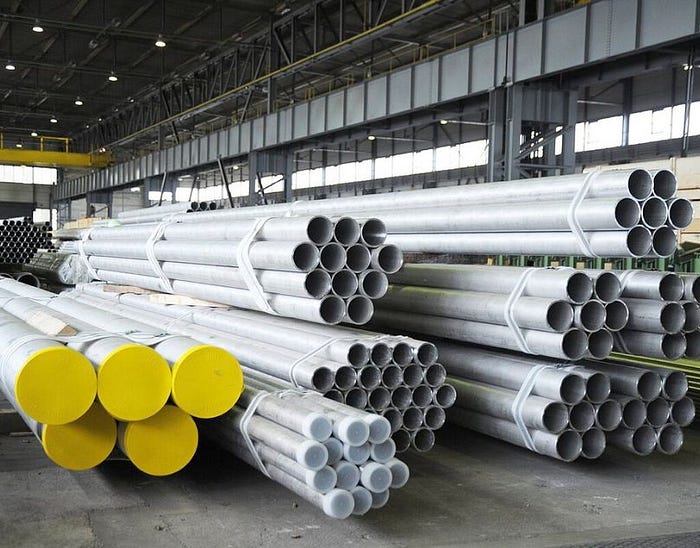A Step-by-Step Guide- Manufacturing Seamless Pipe

A seamless pipe is a form of pipe that has no welding or joints throughout the length of it. It is made from a solid cylindrical billet that is heated before being stretched and pierced to form a hollow tube. The lack of welded seams or connections has various benefits, including increased strength, consistency, and resistance to high-pressure applications.
Seamless pipes Manufacturers are often composed of carbon steel, stainless steel, or alloy steel. They are widely utilized in a wide range of sectors, including oil and gas, petrochemicals, power generation, medications, food processing, and automotive.
Shashwat Stainless Inc. is the largest Seamless Pipe Manufacturers in India. One of our popular products in the Metal Market is Seamless Pipes. These Seamless Pipes are available in various sizes, forms, and dimensions and can also be customized to meet the needs of our customers. Various Metals contribute to the high strength, excellent finish, and long life of these Seamless Pipes.
Manufacturing Seamless Pipe
Manufacturing seamless pipes requires multiple stages that turn a solid cylinder billet into a seamless tube.
Here is a step-by-step guide to the manufacturing process:
Billet Preparation: The selection of high-quality raw materials, generally carbon steel, stainless steel, or alloy steel, is the first step in the process. The billets are solid cylindrical bars that are inspected for surface flaws and blemishes.
Heating: The billets are heated in a furnace to the temperature necessary for hot working. The heating process helps in softening the billet for subsequent deformation.
Piercing: Once the billet has reached the correct temperature, it is sent to a piercing mill. A sharp mandrel in the mill pierces the heated billet, creating a hollow center. The mandrel and billet are both turned at the same time to ensure equal wall thickness.
Extrusion: The billet is pierced and then moved to an elongation mill, where it is subjected to radial and axial stresses. These pressures cause the perforated billet to stretch into a tube-like form with a smaller diameter and greater length. To reach the necessary dimensions and wall thickness, the tube is constantly dragged through a succession of elongation mills.
Sizing: The tube is passed to a sizing mill once the first elongation is complete. The tube is run through many sets of rolls in this mill to reach the final dimensions and improve the surface polish. The sizing procedure also aids in the achievement of precise tolerances and consistent wall thickness.
Heat Treatment: The seamless tube may be heat treated, depending on the material and intended purpose. Heat treatment can improve the tube’s mechanical qualities such as hardness, strength, and ductility. Annealing, normalising, and quenching are common heat treatment procedures.
Finishing Operations: After heat treatment, the seamless tube undergoes various finishing operations. These may include straightening, cutting to desired lengths, end facing, and surface cleaning.
Testing and Inspection: To guarantee that the seamless tubes satisfy the specified specifications and quality standards, quality control checks and non-destructive testing procedures such as ultrasonic testing, hydrostatic testing, and visual inspection are done.
Final Packaging: The manufactured seamless pipes are then packed and labeled according to customer requirements and industry standards. They are usually bundled, strapped, or packed in crates to ensure safe transportation.
Conclusion
In Conclusion, seamless pipes are pipes that have no welded connections or seams throughout their length. They are made via a method known as seamless pipe fabrication, which involves heating and piercing a solid cylindrical billet to make a hollow tube. This process provides a continuous and homogeneous construction over the full length of the pipe.
